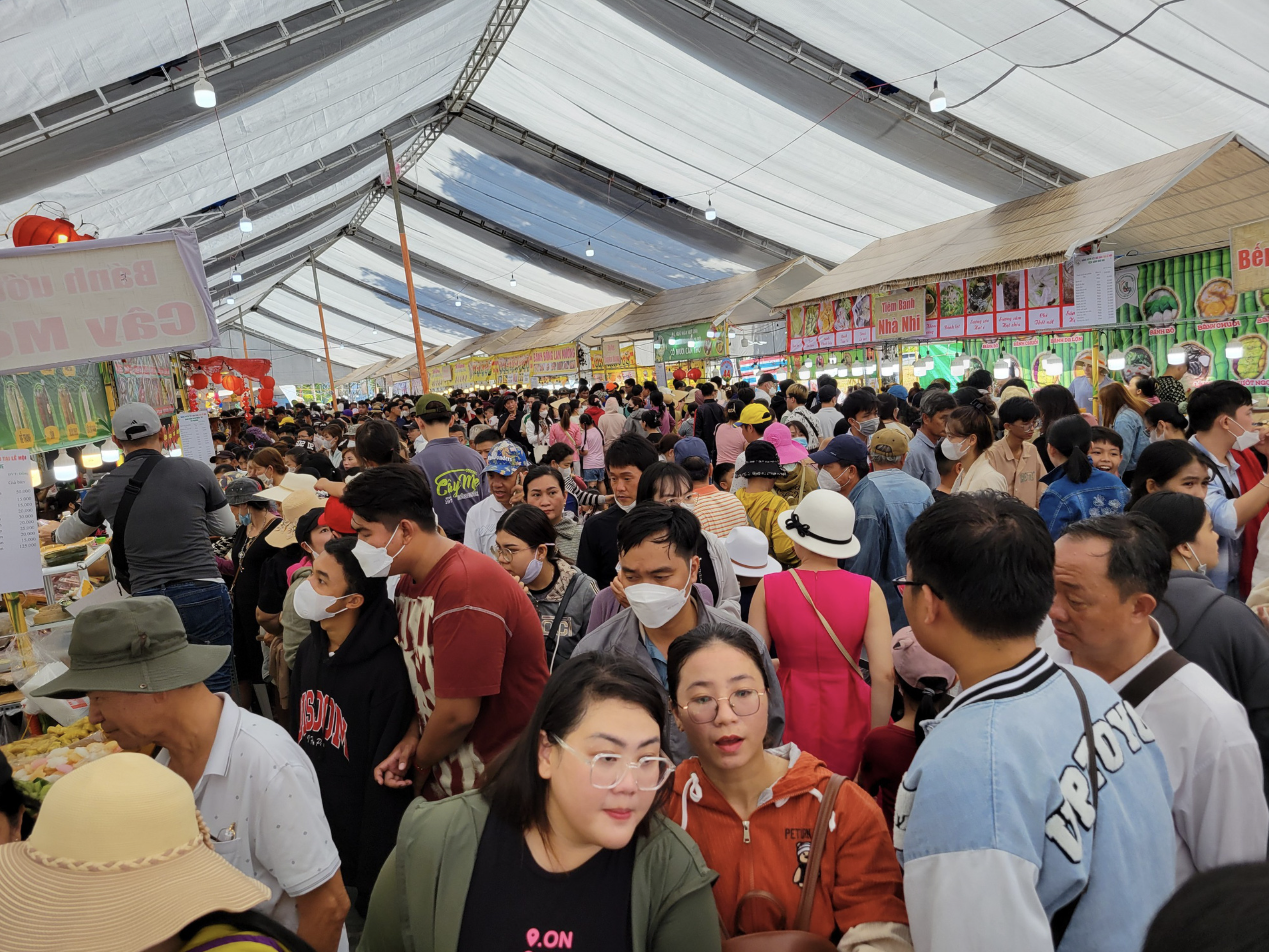The 700-year-old craft not only offers stable income to locals but is also part of the spiritual heritage of the former imperial capital.
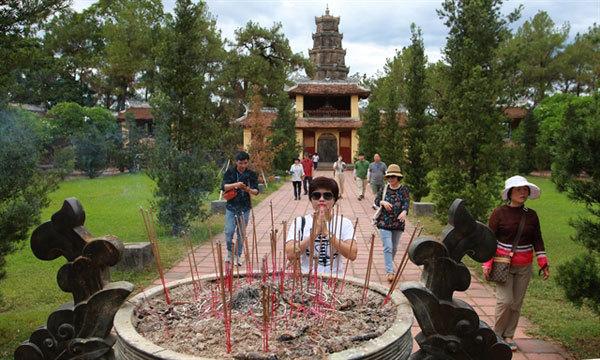 |
| Visitors pray at a big incense jar at the entrance of at Thien Mu Pagoda in Hue City. — VNS Photos Truong Vi |
Many Asian people believe that burning incense can link the living with the dead. The dead’s spirits can follow the smell of incense to appear and enjoy offerings.
Hue people tend to burn incense at sunset to commemorate their ancestors.
The village is situated on Huyen Tran Cong Chua Road, at the foot of Vong Canh Hill by the romantic Huong River, a must-go destination to visitors.
At the entrance of the village, though you can’t see any incense, you will surely smell it.
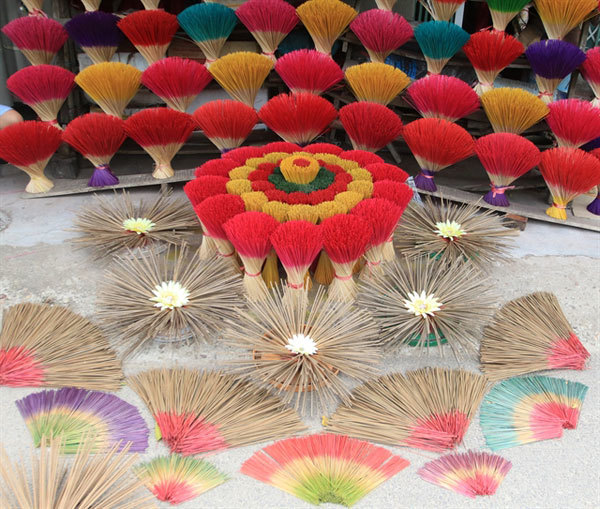 |
| Incense with various colours dried under the sun in the village. |
Colourful bunches of incense dry in the sun all over the village. They look like bunches of flowers with a strong fragrance spreading everywhere.
Almost everyone in the village is part of the incense making process, though they now use machines in the work rather than by hand as hundreds of years ago.
Visitors can witness and join in incense making, including by selecting materials like Chinese herbs, dried grape peel, dried grapefruit flower and cinnamon, which are all ground into incense powder. The core of incense is made from bamboo, which is cut into thin sticks, dyed in various colours and dried under the sun for many days.
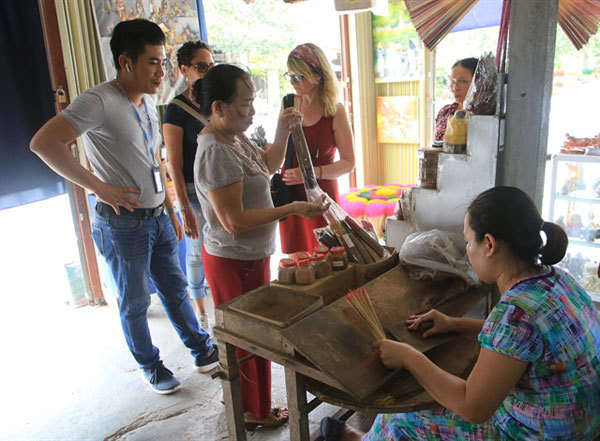 |
| Tourists visit a local incense workshop. |
According to elders in the village, the craft dates back to the Nguyen Dynasty (1802-1945).
The village now provides various kinds of incense products like the ones with the odour of cinnamon, lemongrass, jasmine and agarwood.
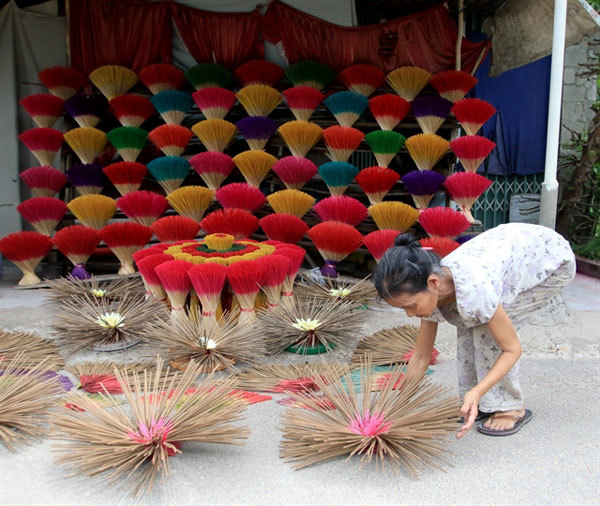 |
| Incense in the village offers a special fragrance. |
The powder of materials mixes in different ratios to form different fragrances.
The powder is mixed with water to form a paste, which is then stuck into the bamboo core.
The incense maker should ensure that the powder sticks evenly across the stick. The incense is then dried under the sun to be preserved for several months without getting spoiled by mould.
There are about 40 enterprises producing alga wood incense in Thua Thien Hue Province, yet the product made in the village has a unique fragrance.
In the past, the bamboo core had only two colours: brown or red. Yet recently, more colours are used to dye to the core to make the finished product more attractive.
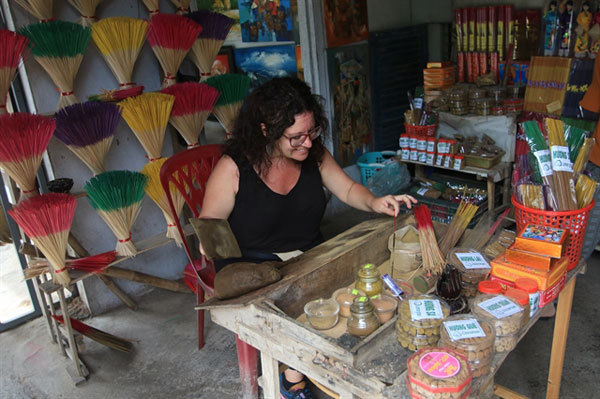 |
| A foreign tourist joins the incense making process. |
Incense made in the village is now sold in various big cities throughout the country and exported overseas.
In the past eight years, villagers have been offering incense-making-experience tours to visitors. VNS


